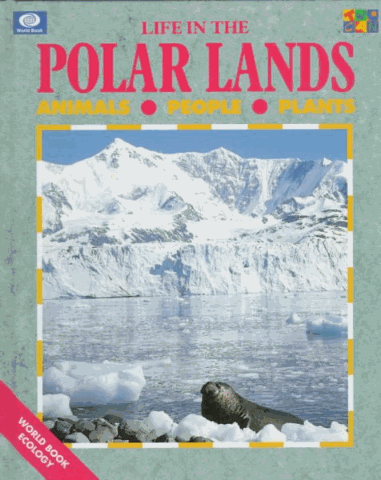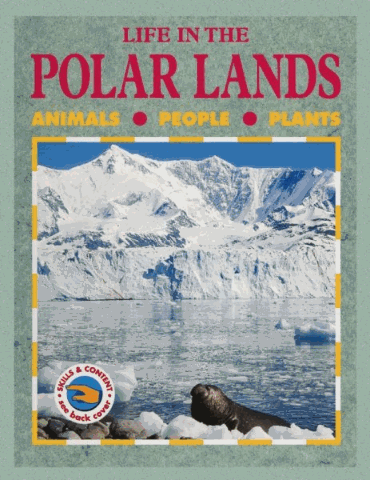
Color photographs and text provide an introduction to polar life, examining weather conditions, native plants and animals, and Arctic peoples; discussing the danger of exploitation; and including an Inuit tale about the source of light.
year: 1997, 2001, 2000, 1990, 1993, 2005
call number/section: 577, 577.5, 919.8, 508.31, 574.92, 577.09, 998, 574.5, 574.52, 578, 577.58, 920, 551
subjects: ecology, polar regions, juvenile literature, polar regions, juvenile literature, human ecology, arctic regions, antarctic regions, natural history, antarctica, antarctica, nature, effect of human beings on, environmental protection
Editions

Byles, Monica
World Book/Two-Can (1997)
Describes how humans, plants, and animals survive at the North and South Poles, the effect of human industrial activity on the polar landscapes, and how changes in the world's weather patterns affect the Poles.
Schools: 15

Byles, Monica
World Book (2001)
Describes how humans, plants, and animals survive at the North and South Poles, the effect of human industrial activity on the polar landscapes, and how changes in the world's weather patterns affect the Poles.
Schools: 21

Byles, Monica
Two-Can (2000)
Color photographs and text provide an introduction to polar life, examining weather conditions, native plants and animals, and Arctic peoples; discussing the danger of exploitation; and including an Inuit tale about the source of light.
Schools: 0

Byles, Monica
Watts (1990)
Describes how humans, plants, and animals survive at the North and South Poles, the effect of human industrial activity on the polar landscapes, and how changes in the world's weather patterns affect the Poles.
Schools: 6

Byles, Monica
Scholastic (1993)
Describes how humans, plants, and animals survive at the North and South Poles, the effect of human industrial activity on the polar landscapes, and how changes in the world's weather patterns affect the Poles.
Schools: 1

Byles, Monica
World Book (2005)
Describes how humans, plants, and animals survive at the North and South Poles, the effect of human industrial activity on the polar landscapes, and how changes in the world's weather patterns affect the Poles.
Schools: 3